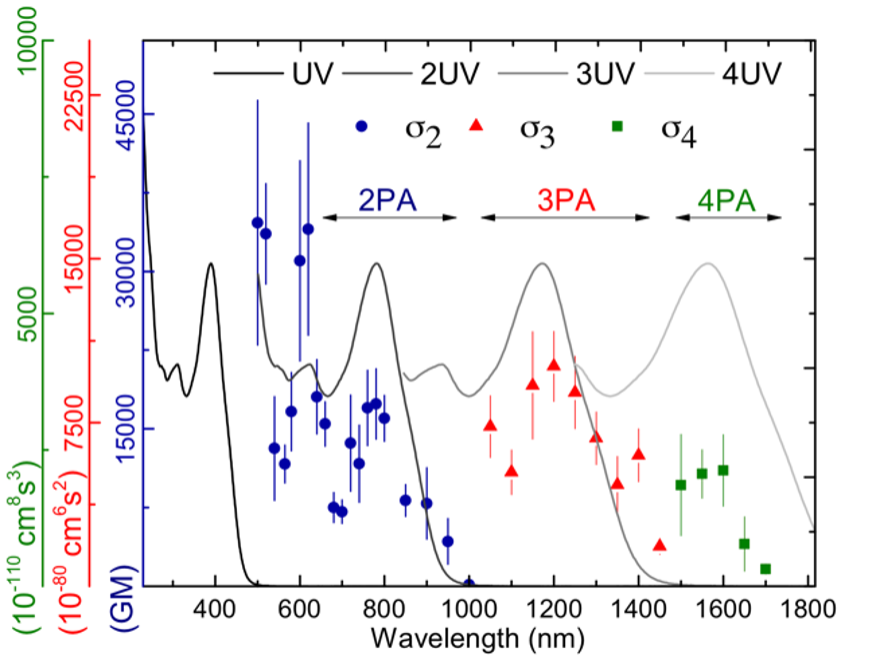Spatiotemporal light control by programmable molecules
This project will involve use of fs- and ns-pulsed wavelength-tuneable lasers, in some cases interfaced to electrochemistry equipment, to investigate NLO properties of new molecules/materials, and can involve modelling properties using the ANU’s supercomputer.
Groups
Project status
Content navigation
About
The move from electronics to photonics requires nonlinear optical (NLO) materials that can modify the properties of light. One “hot” area of NLO materials research is “multi-photon absorption” (MPA). MPA occurs at the focus of a laser beam (where the light is sufficiently intense for two or more photons to arrive at the same time). Localization of “action” to the focal point enables 3D control for uses such as micromachining, data storage, biological imaging, or photodynamic therapy. Materials development requires wavelength-tuneable lasers because NLO effects are wavelength dependent, and different applications require strong MPA performance at different wavelengths, so wavelength-dependent studies are essential (see figure: 2PA (blue circles), 3PA (red triangles), and world-record 4PA (green squares) for an organometallic dendrimer from our group, plotted with 1x (black trace), 2x (dark grey), 3x (light grey) and 4x (pale grey) the UV-vis spectrum).

Another hot area is NLO switching, in which we have demonstrated fundamentally new effects: NLO electro-/photo-/halo-chromisms. This project will involve use of fs- and ns-pulsed wavelength-tuneable lasers, in some cases interfaced to electrochemistry equipment, to investigate NLO properties of new molecules/materials, and can involve modelling properties using the ANU’s supercomputer.

